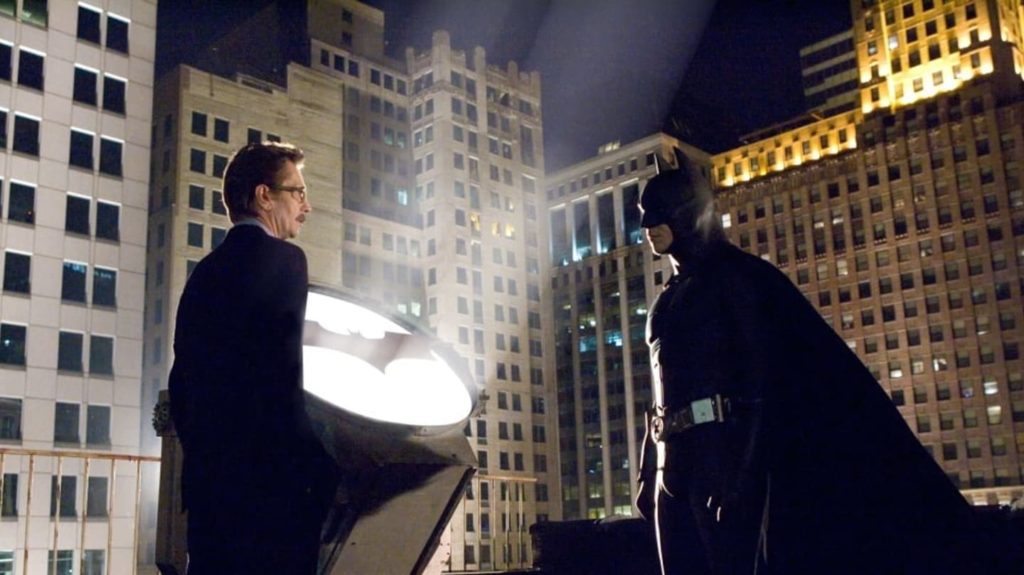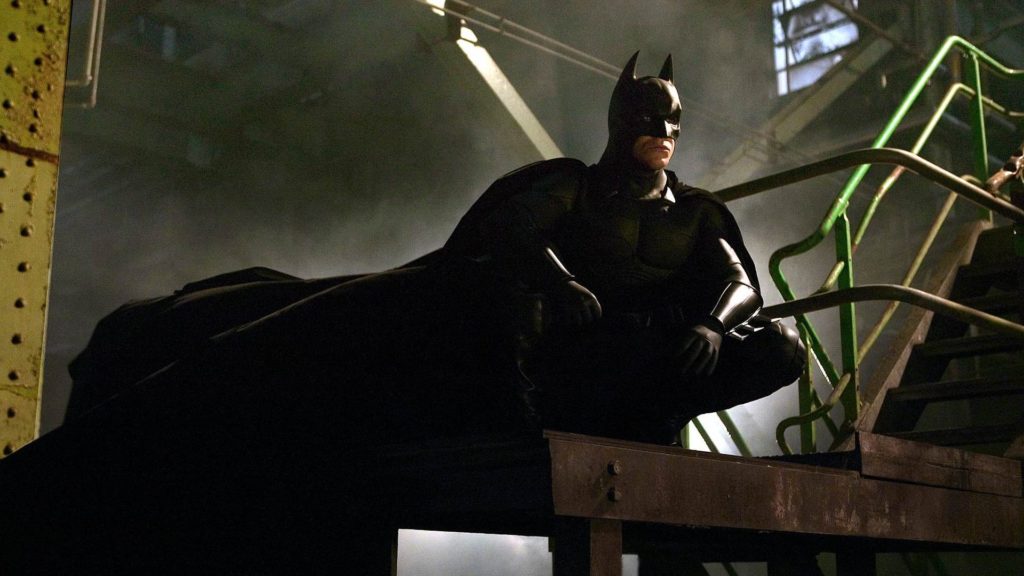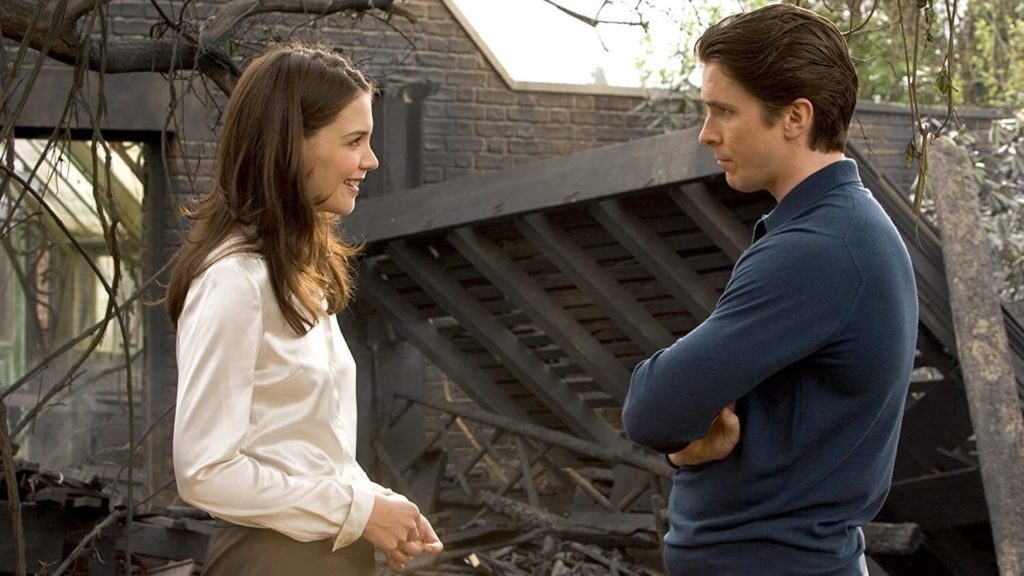And why do we fall, Bruce?
Batman Begins remains one of the great comic book movies because Christopher Nolan captures a really compelling tug of war between two competing forces: gritty realism and operatic mythmaking.
On the one hand, we get to see all of the totems of Batman — the cave, the car, the suit, the weapons — introduced fairly naturally, stripped of their iconography. The movie does a great job of making it feel like Bruce Wayne is a real guy — albeit a traumatized billionaire — slowly inventing the concept of Batman in a semi-plausible manner.
On the other hand, Nolan builds the entire arc of Batman around Bruce Wayne’s struggle with ideas in the abstract: fear and justice and the destruction of one’s self in the name of public service. The Bat as a mythic force. The script is drowning in babble that’s part psychological, part philosophical, as Wayne ponders the meaning and value of his name, of turning his symbol of fear against his opponents, of reclaiming Gotham (a symbol of rot) versus burning it to the ground.
 Where the movie struggles is when that second impulse, mythmaking, overpowers the first, gritty storytelling. Everything involving the League of Shadows feels like it belongs in a different universe from the rest of the movie; it frankly feels a bit silly. This is especially true in the film’s climax, which is narratively obtuse, almost incoherent. It’s all about symbols: Dominating the populace with radical fear by turning their institutions and machinery against them.
Where the movie struggles is when that second impulse, mythmaking, overpowers the first, gritty storytelling. Everything involving the League of Shadows feels like it belongs in a different universe from the rest of the movie; it frankly feels a bit silly. This is especially true in the film’s climax, which is narratively obtuse, almost incoherent. It’s all about symbols: Dominating the populace with radical fear by turning their institutions and machinery against them.
This is where I’ll point out that Batman Begins has a slight conservative bent to it: It worships the altruistic billionaire and the righteous cop and sees the anti-corruption revolutionaries as the hypocritical villains. But the film is not overtly political; most characters and plot threads are primarily symbolic in the quest of Bruce Wayne and Batman’s self-definition rather than social commentary.
Nolan builds on the visual schema for Batman defined by Tim Burton in Batman (1989) and Batman Returns (1992) by making Gotham an Expressionist horror city, a la Metropolis; all creepy alleys and horrifying skyscrapers. It honestly doesn’t suit the material that well: The more realistic take on Batman, with its emphasis on real, rotting institutions practically begs for something more grounded and dingy (which Nolan would give us in future Batman outings).

The film’s action is hit or miss; the one major vehicle chase scene is pretty terrific. The hand-to-hand action scenes, however, are marred with choppy editing and poor lighting. It’s impossible to follow. But all of the action has a visceral physicality to it. Nolan’s visual instincts really grip you.
The cast is pretty great all around, but especially Christian Bale in the lead role: For the movie to work, you need a Bruce Wayne who can hit every note in Nolan’s complex characterization, from the big operatic stuff to the gritty physical stuff to the dark intensity. Bale is up for it all, and it’s hard to imagine someone else with the proper tone and range and screen presence to pull it off.

The rest of the acting is excellent as well. Gary Oldman is perfect as the half-jaded, half-idealistic Commissioner Gordon. By casting Liam Neeson in the villain role, Nolan strikes an interesting tone; Neeson is more heroic than, say, Willem Dafoe in the first Spider-Man, giving Ra’s Al Ghul a tragic, lost soul angle rather than unhinged villainy. And Katie Holmes’ performance lacks some depth, but she’s charismatic enough as Rachel.
Batman Begins coalesces into a special sort of “cape opera” that merges all sorts of competing ideas into a very serious, sweeping portrait of Batman. It works exceptionally well on its own, but it was thankfully just an appetizer for Christopher Nolan’s larger-than-life vision of the Caped Crusader.
- Review Series: Top 100 (2009 List)
- Review Series: Christopher Nolan
Is It Good?
Exceptionally Good (7/8)
Awards, Honors, & Rankings
Dan is the founder and head critic of The Goods. Follow Dan on Letterboxd. Join the Discord for updates and discussion.

